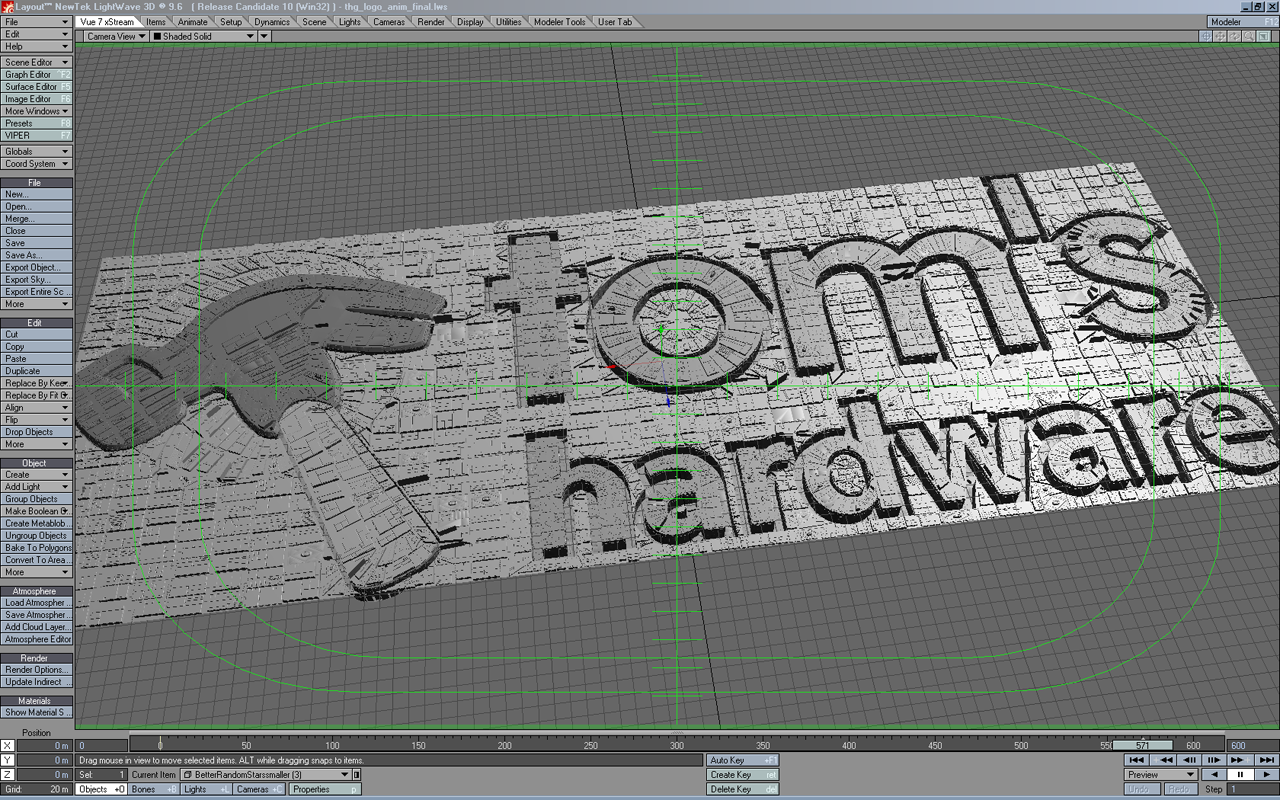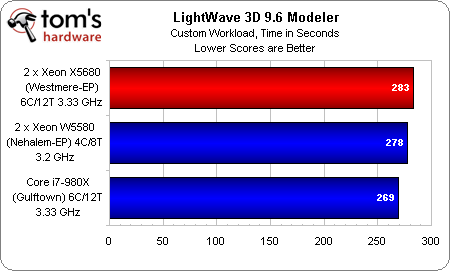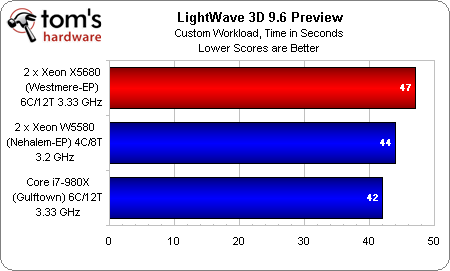Intel Xeon 5600-Series: Can Your PC Use 24 Processors?
The professional space is peppered with products derived from the desktop. Today we're looking at Intel's Xeon X5680 CPUs, which look a lot like Core i7-980X, only they're optimized for dual-socket platforms. We're also introducing new Adobe CS5 tests.
Benchmark Results: LightWave 3D 9.6
One thing you’ll notice when you use applications with multiple components is a tendency for some functionality to include optimizations for threading and other pieces do not.
Our custom LightWave 3D Modeler test, which renders a 1+ million polygon version of the Tom’s Hardware logo, gains nothing from the additional compute muscle afforded by 24 threads available concurrently. The same holds true for the OpenGL-based fly-through of the logo in LightWave Layout. In fact, in both cases (as we've seen previously), the more complex architectures sacrifice performance compared to simpler and less-expensive setups.
| Header Cell - Column 0 | 2 x Xeon X5680 | 2 x Xeon W5580 | 1 x Core i7-980X Extreme |
|---|---|---|---|
| Render, Frame 8 | 6 min., 7 sec. | 7 min., 30 sec. | 9 min., 35 sec |
| Render, Frame 41 | 6 min., 29 sec. | 7 min., 49 sec. | 10 min., 6 sec. |
| Render, Frame 500 | 7 min., 8 sec. | 8 min., 35 sec. | 11 min., 12 sec. |
| Render, Frame 600 | 5 min., 20 sec. | 6 min., 12 sec. | 8 min. |
Start rendering individual frames from the Layout-based logo file, however, and those CPU cores suddenly kick into gear. While two Xeon X5680s can’t quite halve the rendering time of a single Core i7-980X, they come close enough to make the addition of a second processor worthwhile for professionals who do a lot of rendering in LightWave.
Just remember—not every component of NewTek’s software benefits equally from a multi-socket configuration.
Get Tom's Hardware's best news and in-depth reviews, straight to your inbox.
Current page: Benchmark Results: LightWave 3D 9.6
Prev Page Benchmark Results: MatchMover 2011, Vue 8 PLE, And Euler3D Next Page Benchmark Results: Power Consumption And Efficiency


